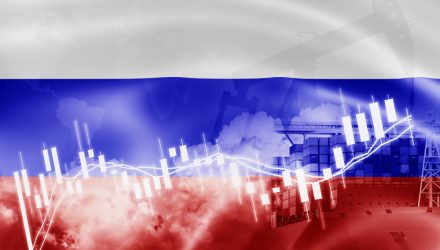Regardless of geographic location, geopolitical tensions often roil global financial markets, and that’s proving true amid Russia’s invasion of Ukraine.
Scenarios like that often prompt investors to seek lower-volatility assets, such as exchange traded funds dedicated to that objective. That group includes the Invesco S&P 500 Low Volatility ETF (SPLV). SPLV, which tracks the S&P 500 Low Volatility Index, is one of the elder statesmen of the low-volatility ETF group, so it’s seen its share of geopolitical calamity over the years.
Against the backdrop of armed conflict — or any source of elevated market turbulence, for that matter — the primary objective of an ETF like SPLV is to subject investors to less downside risk than broader market counterparts.
“The expectation with low-volatility funds is that over a sufficiently long period of time, investors will get exposure to a particular corner of the equity market, be it U.S. large and mid-caps, emerging-markets stocks, developed international stocks, with a lower degree of volatility,” says Morningstar’s Ben Johnson.
As Johnson notes, low-vol ETFs aren’t perfect. A fund like SPLV isn’t designed to go up when markets decline. However, SPLV is doing its job in terms of not performing as poorly as the broader market. Year-to-date, the fund is outperforming the S&P 500 by 116 basis points.
“These funds aren’t going to bat 1,000, taking a little bit of the sting out of each and every downdraft in the market. But if you give them long enough, if you can stick with them long enough, the expectation is that you’ll get marketlike returns over a long period of time with less risk, which, at least in theory, might make it somewhat easier to stick with that portfolio,” adds Johnson.
The key is a long-term mindset with low-volatility ETFs. In the case of SPLV, the fund is, not surprisingly, heavily allocated to slower growth sectors such as consumer staples and utilities, meaning that it takes longer for solid returns to accrue. Additionally, low volatility’s advantages cannot be measured in days or weeks because there are instances of the factor not performing as expected over shorter holding periods.
“What we’ve seen more recently for the year to date in 2022 is that depending on the day, depending indeed on the week, low-volatility funds have either done better or worse than their common vanilla market-cap counterparts,” concludes Johnson. “Indeed, at one point as recently as a week ago, high-beta stocks were outperforming low-volatility stocks for the year to date, reflecting the fact that energy stocks have really been on a tear as a result of the spike we’ve seen in energy prices.”
For more news, information, and strategy, visit the ETF Education Channel.
The opinions and forecasts expressed herein are solely those of Tom Lydon, and may not actually come to pass. Information on this site should not be used or construed as an offer to sell, a solicitation of an offer to buy, or a recommendation for any product.








